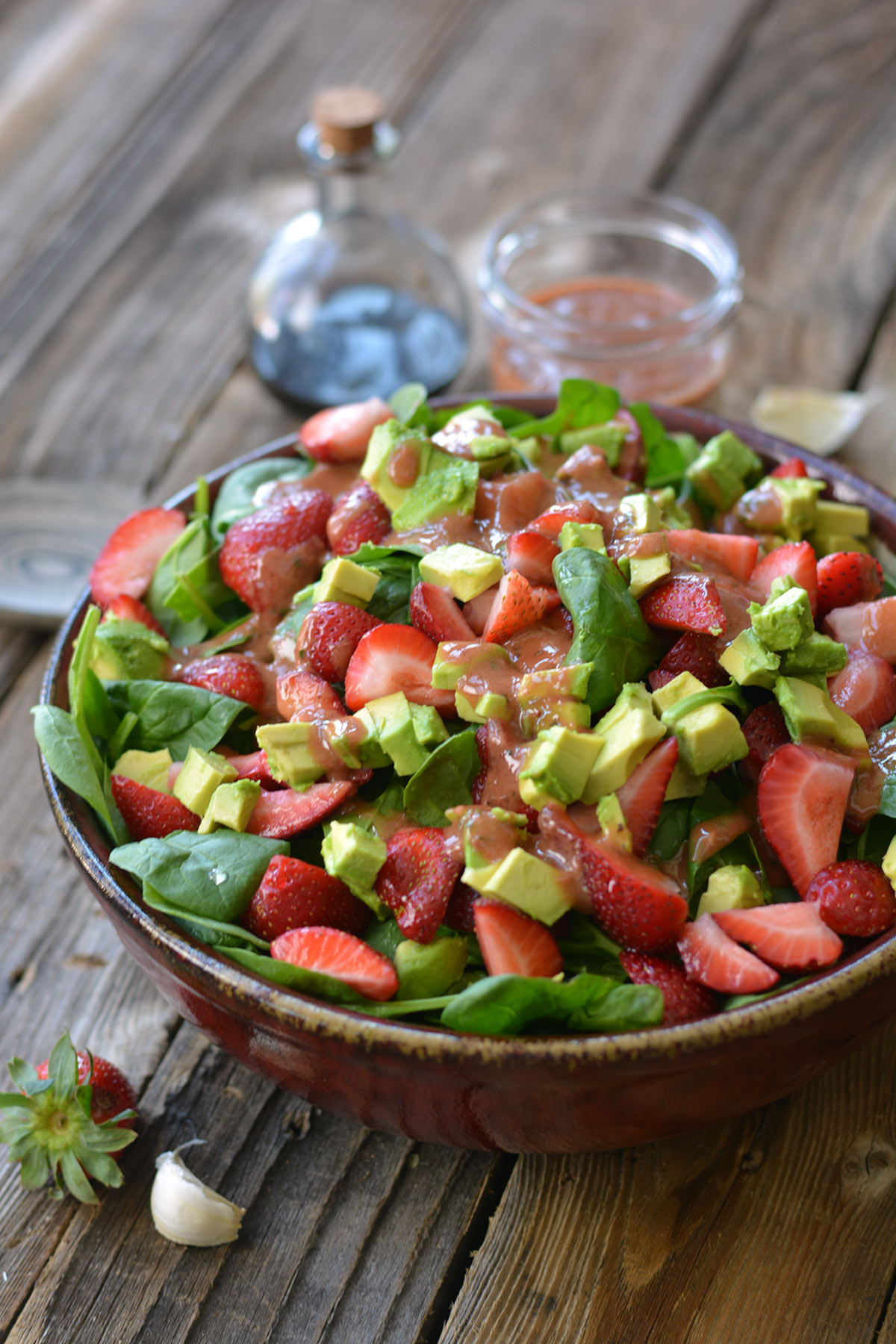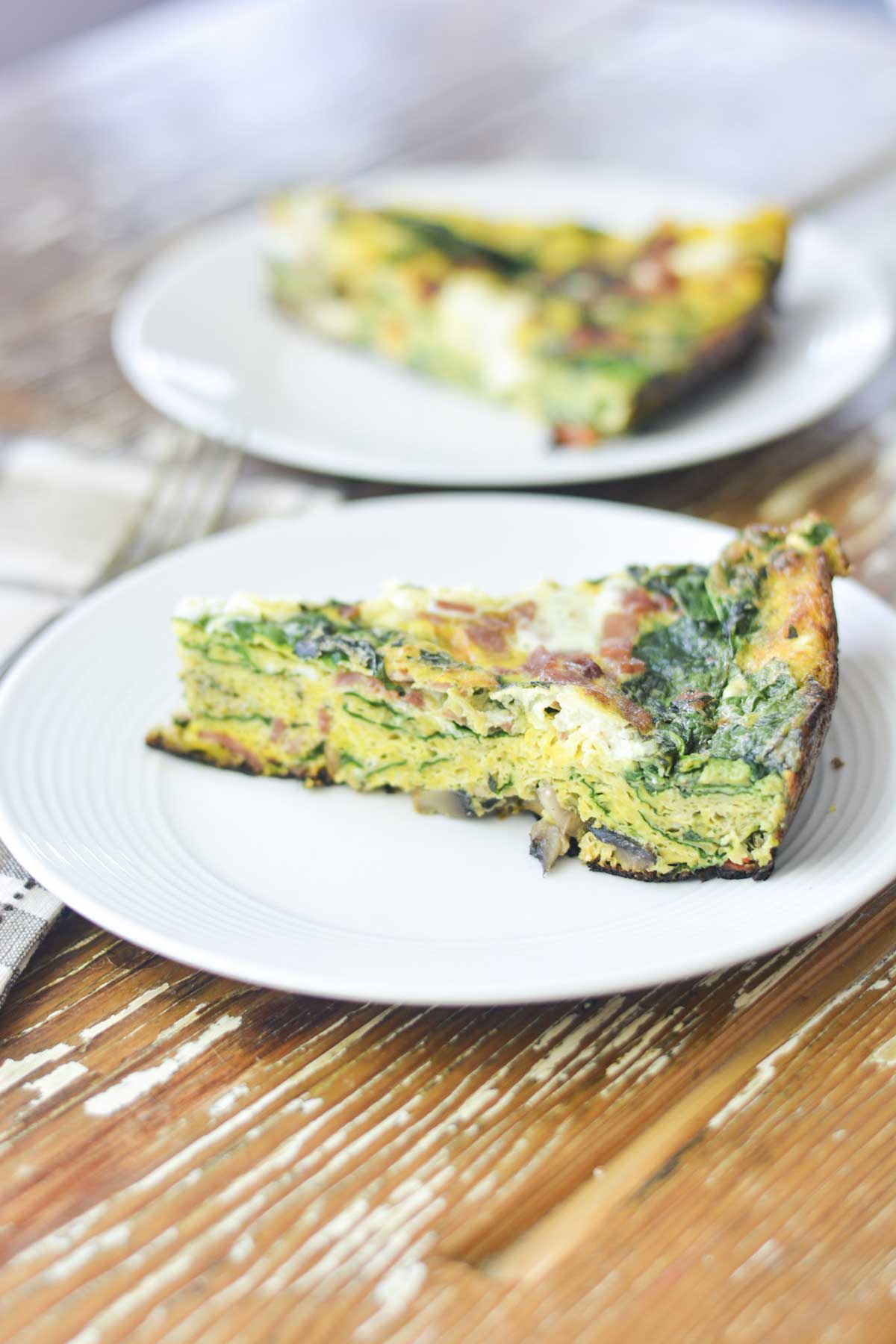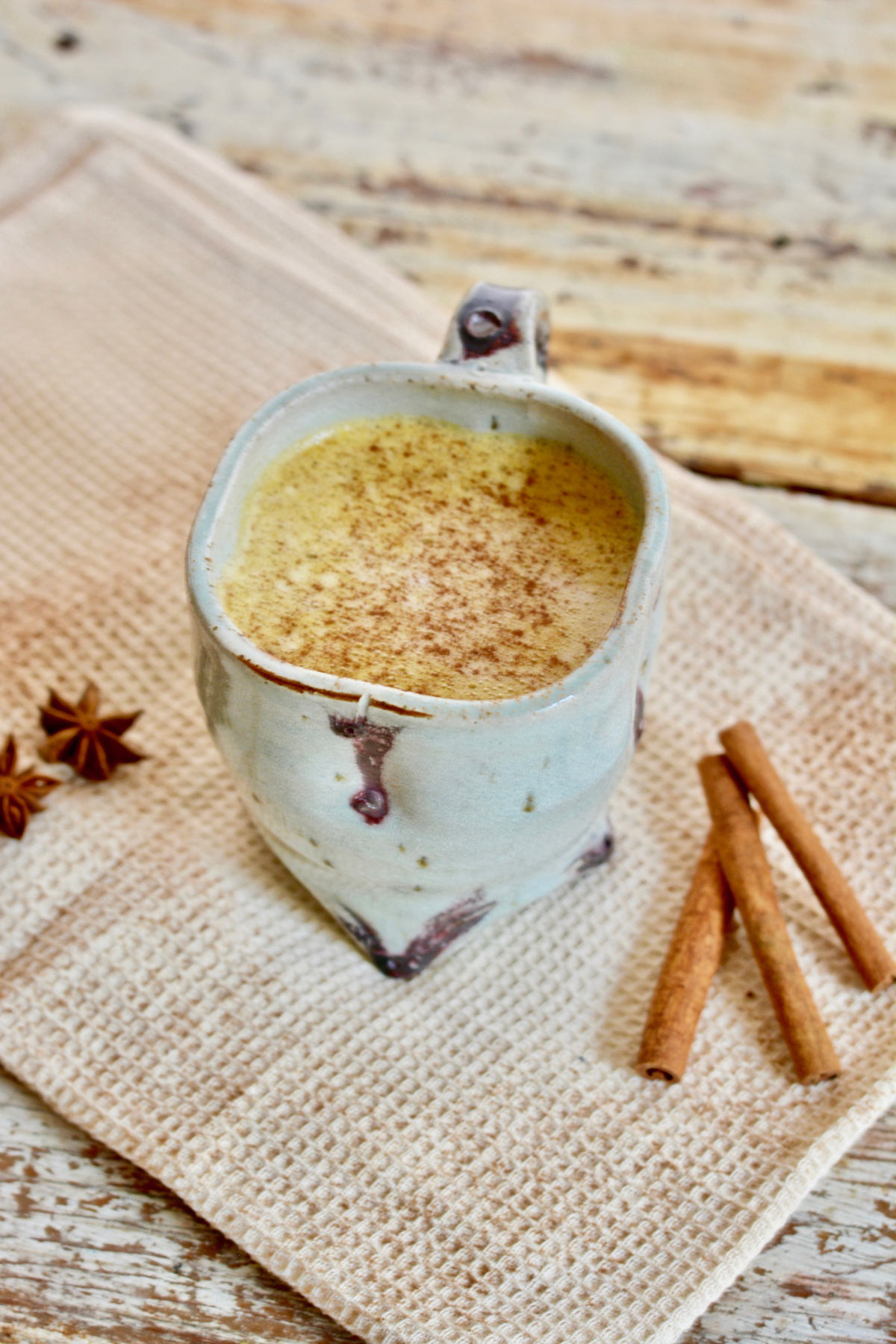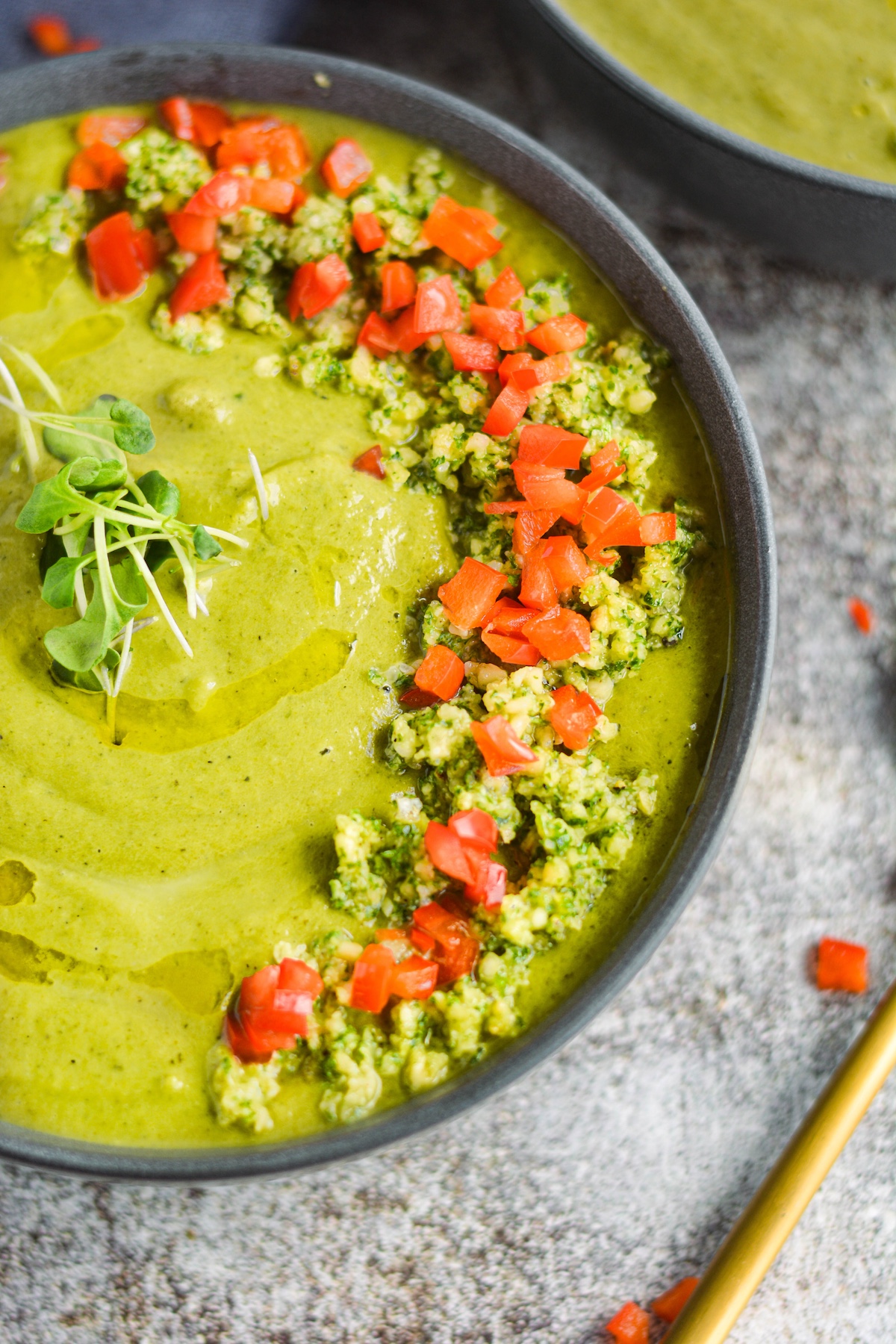How To Make Za’atar Spice

This homemade Za’atar seasoning recipe is a famous Middle Eastern spice blend made from toasted sesame seeds, dried oregano, thyme, marjoram, sesame seeds, and often sumac.
It can be used in a multitude of ways. Use this as a rub for beef, fish, chicken, or lamb, or sprinkle it over baba ganoush or hummus. Let’s make it!
What is Zaatar spice?
In the vast world of spices, a few stand out for their unique and captivating flavors. One such spice is zatar, an aromatic blend from the Middle East. With its rich history, distinct taste, and versatile uses, zatar has become a staple in Middle Eastern cuisine and is now gaining popularity worldwide. Join us on a culinary journey as we explore the exquisite flavors and culinary wonders of zatar spice.
The Origins of Zatar Spice
Zatar spice, also spelled za’atar or zaatar, has a long history that dates back centuries. Its name originates from the Arabic word “za’atar,” which refers to a type of wild thyme found in the Mediterranean region. Over time, the term expanded to encompass a blend of herbs, spices, and seeds that vary from one region to another.
Ingredients and Flavor Profile
While there are regional variations, zatar spice typically consists of a combination of dried thyme, sumac, sesame seeds, and salt. Additional ingredients such as oregano, marjoram, cumin, and fennel seeds may also be included, depending on the specific recipe or preference.
The flavor profile of zatar spice is truly exceptional. The thyme brings a robust herbal note, while sumac adds a tangy, citrusy taste that provides a delightful balance. The nutty and earthy undertones from the toasted sesame seeds create a harmonious blend. The combination of these ingredients results in a versatile spice mix that adds complexity and depth to various dishes.
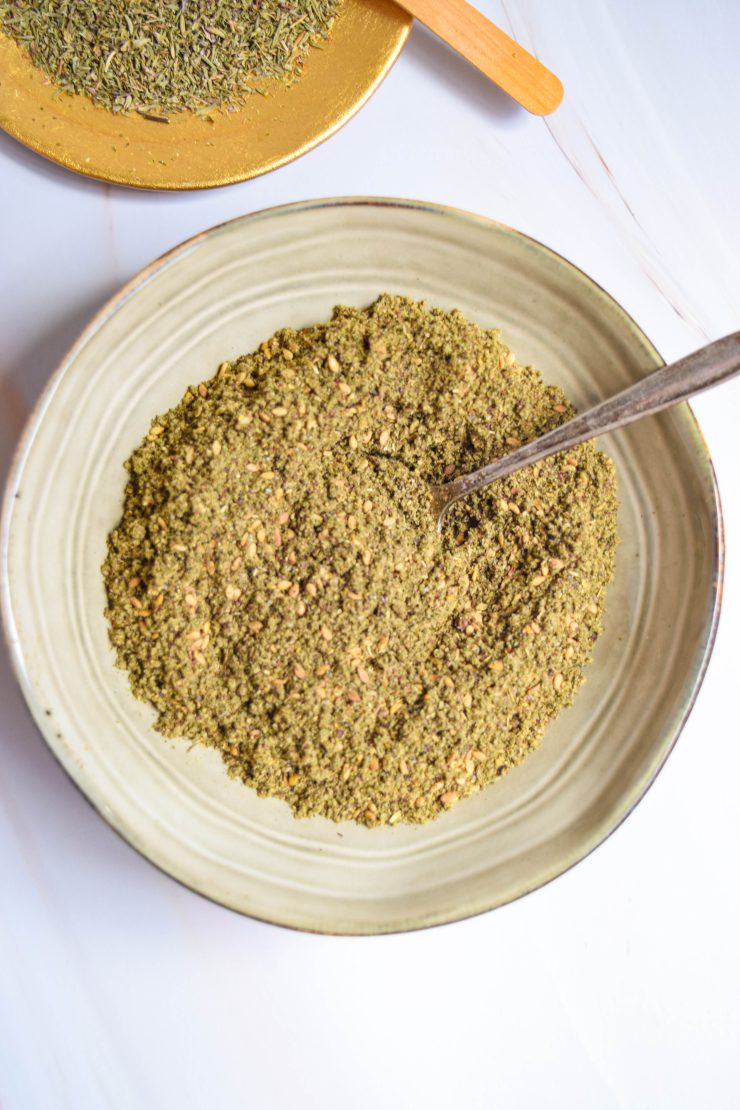
The Magic of Za’atar: The aroma of za’atar is enchanting, with a combination of earthiness, herbaceousness, and a hint of citrus. The precise composition of the seasoning can vary, but it typically includes some key ingredients. Let’s explore the essential components that contribute to the magic of za’atar:
- Wild Thyme: The backbone of za’atar, dried wild thyme brings a robust and aromatic note to the blend. Its fragrance is captivating and instantly transports you to the sun-drenched hills of the Mediterranean.
- Sumac: Known for its tangy and citrusy flavor, sumac adds a delightful tartness to the seasoning. It balances the earthy notes of the thyme and imparts a distinctive character that sets za’atar apart.
- Sesame Seeds: Toasted sesame seeds lend a nutty and delicate crunch to the mix, elevating the overall texture and complexity. They contribute a subtle richness that harmonizes with the other ingredients.
Culinary Uses
Zatar spice is a culinary superstar, elevating a wide range of dishes with distinctive flavors. Let’s explore some of the popular uses of zatar spice:
- Zatar Dip: A simple yet delicious way to enjoy zatar is by mixing it with olive oil and using it as a dip for bread. The aromatic blend of flavors makes it a perfect appetizer or snack.
- Seasoning for Meats: Zatar spice is an excellent rub for meats such as chicken, lamb, or beef. The combination of herbs and spices adds a tantalizing flavor when sprinkled on grilled or roasted meats.
- Enhancing Vegetables: From roasted vegetables to sautéed greens, zatar spice brings a vibrant twist to plant-based dishes. It can be sprinkled over vegetables before cooking or used as a finishing touch for an added burst of flavor.
- Bread and Pastries: Zatar-infused bread is a staple in Middle Eastern cuisine. From flatbreads to pastries, zatar adds a delightful herbal note and a captivating aroma. You can sprinkle zatar on top of the bread dough before baking or mix it into the dough itself.
How to make it zatar
Ingredients:
- 2 tablespoons dried thyme
- 2 tablespoons ground sumac
- 2 tablespoons toasted sesame seeds
- 1 teaspoon salt (adjust to taste)
- Optional: 1 teaspoon dried oregano, 1 teaspoon dried marjoram, or other preferred herbs/spices
Instructions:
- Toast the sesame seeds: Place the sesame seeds in a dry skillet over medium heat. Toast them for a few minutes, stirring frequently, until they turn golden brown and become fragrant. Remove from heat and let them cool.
- Grind the sesame seeds: Once the sesame seeds have cooled, grind them using a mortar and pestle or a spice grinder. Grind them until they have a coarse texture, but be careful not to over-grind them into a paste.
- Combine the ingredients: In a mixing bowl, add the dried thyme, ground sumac, ground sesame seeds, salt, and any optional herbs or spices you prefer. Mix everything together thoroughly, ensuring the ingredients are well incorporated.
- Taste and adjust: Give the zatar spice blend a taste and adjust the salt or any other ingredient according to your preference. You can make it more tangy with additional sumac or more herbal with additional thyme. Personalize it to suit your taste buds.
- Store and enjoy: Transfer the zatar spice blend to an airtight container and store it in a cool, dark place. It can be used immediately, but the flavors will continue to develop and intensify over time. Use it to enhance your favorite dishes, as mentioned in the blog, or get creative and experiment with new recipes.
Remember, zatar spice blends can vary based on regional preferences and personal taste. Feel free to adjust the ratios and ingredients according to your preference.
Now you have your homemade zatar spice ready to add a burst of Middle Eastern flavors to your culinary creations! Enjoy exploring the diverse and delicious possibilities this unique spice blend offers.
Health Benefits
Beyond its culinary appeal, zatar spice also offers several health benefits.
- Sumac, another essential ingredient, is rich in vitamin C and may have antimicrobial and antioxidant properties.
- Thyme, a key component of zatar, contains antioxidants and has been associated with anti-inflammatory properties.
- Sesame seeds in zatar are an excellent source of fiber, healthy fats, and minerals like calcium and iron.
Incorporating zatar spice into your meals can provide a flavorful way to enjoy these potential health benefits.
Zatar spice is a true gem in the world of flavors, offering a unique blend of herbs, spices, and seeds that entice the palate and add depth to a wide range of dishes.
What can I substitute for zatar
If you don’t have za’atar spice on hand or if you’re unable to find it in your local stores, don’t worry! You can use a few substitutes to replicate some of the flavors and characteristics of za’atar.
- Herbes de Provence: Herbes de Provence is a French herb blend that shares some similarities with za’atar. It typically includes dried thyme, rosemary, savory, marjoram, and sometimes lavender. While it doesn’t have the tanginess of sumac or the sesame seeds, it can still add a lovely herbaceous note to your dishes.
- Dried Thyme and Sumac: If you have dried thyme and ground sumac separately, you can combine them in equal parts to achieve a simplified version of the flavors found in za’atar. This combination will provide the earthiness of thyme and the tanginess of sumac, which are the primary components of za’atar.
- Dukkah: Dukkah is an Egyptian spice blend that shares similarities with za’atar. It typically contains toasted nuts, seeds (sesame and coriander), spices (cumin and cinnamon), and salt. While the flavor profile is not identical to za’atar, dukkah can provide a delightful and aromatic addition to various dishes.
Remember, these substitutes may not perfectly replicate the exact flavors of za’atar. Still, they can add their own unique touch to your culinary creations. Feel free to adjust the ratios and experiment with different combinations to suit your taste preferences and the specific recipe you’re working with.
Where can I buy it?
Za’atar spice can be found in various places depending on your location. Here are a few options to consider when looking to purchase za’atar:
- Local Middle Eastern or Mediterranean Grocery Stores: Specialty grocery stores catering to Middle Eastern or Mediterranean cuisine will likely carry za’atar spice. These stores often have a wide range of spices, herbs, and unique ingredients specific to the region.
- Online Retailers: There are several online marketplaces and specialty food stores where you can find za’atar spice. Websites like Amazon, Etsy, or specialty food retailers offer a wide selection of za’atar blends, including different variations and brands.
- Middle Eastern or Mediterranean Restaurants and Cafes: Some Middle Eastern or Mediterranean restaurants and cafes also sell packaged spices and ingredients. If you have a local establishment that serves Middle Eastern cuisine, inquire if they offer za’atar spice for sale.
- Farmers Markets and Specialty Food Markets: Local farmers markets or specialty food markets that feature international products may carry za’atar spice. These markets often showcase unique and artisanal food products from different regions.
Did you make this recipe?
Please let me know how it turned out for you! Leave a comment below and share a picture on Instagram with the hashtag #thetastesoflifeholisticblog
More Recipies
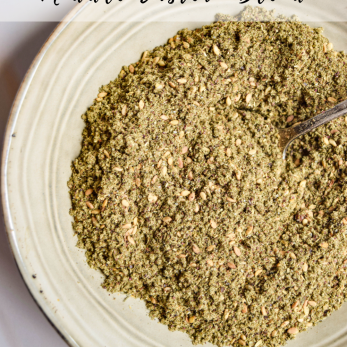
Za’atar Spice
Ingredients
- 2 tbsp thyme dried
- 2 tbsp sumac ground
- 2 tbsp sesame seeds toasted
- salt adjust to taste
- 1 tbsp organ or majoram optional
Instructions
- Toast the sesame seeds: Place the sesame seeds in a dry skillet over medium heat. Toast them for a few minutes, stirring frequently, until they turn golden brown and become fragrant. Remove from heat and let them cool.
- Grind the sesame seeds: Once the sesame seeds have cooled, grind them using a mortar and pestle or a spice grinder. Grind them until they have a coarse texture, but be careful not to over-grind them into a paste.
- Combine the ingredients: In a mixing bowl, add the dried thyme, ground sumac, ground sesame seeds, salt, and any optional herbs or spices you prefer. Mix everything together thoroughly, ensuring the ingredients are well incorporated.
- Taste and adjust: Give the zatar spice blend a taste and adjust the salt or any other ingredient according to your preference. You can make it more tangy with additional sumac or more herbal with additional thyme. Personalize it to suit your taste buds.
- Store and enjoy: Transfer the zatar spice blend to an airtight container and store it in a cool, dark place. It can be used immediately, but the flavors will continue to develop and intensify over time. Use it to enhance your favorite dishes, as mentioned in the blog, or get creative and experiment with new recipes.



